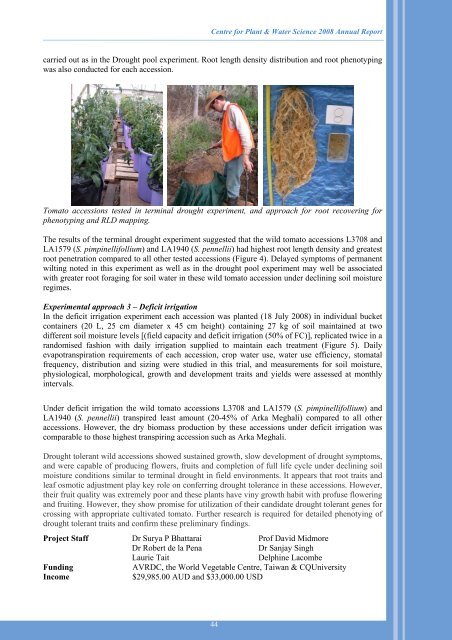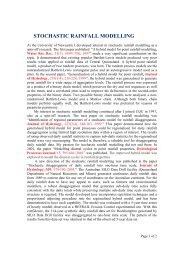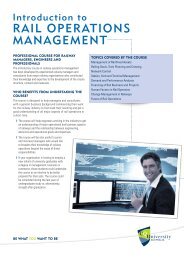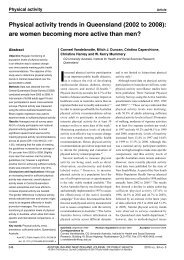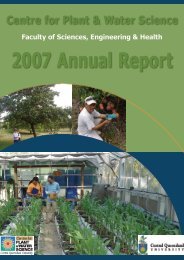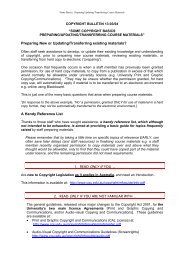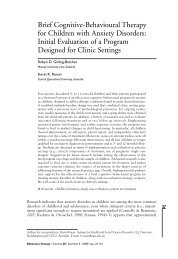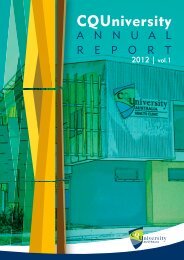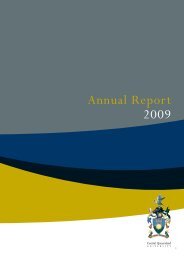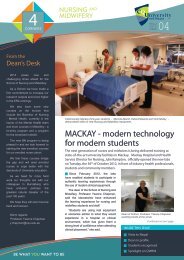Centre for Plant & Water Science - Central Queensland University
Centre for Plant & Water Science - Central Queensland University
Centre for Plant & Water Science - Central Queensland University
Create successful ePaper yourself
Turn your PDF publications into a flip-book with our unique Google optimized e-Paper software.
<strong>Centre</strong> <strong>for</strong> <strong>Plant</strong> & <strong>Water</strong> <strong>Science</strong> 2008 Annual Report<br />
carried out as in the Drought pool experiment. Root length density distribution and root phenotyping<br />
was also conducted <strong>for</strong> each accession.<br />
Tomato accessions tested in terminal drought experiment, and approach <strong>for</strong> root recovering <strong>for</strong><br />
phenotyping and RLD mapping.<br />
The results of the terminal drought experiment suggested that the wild tomato accessions L3708 and<br />
LA1579 (S. pimpinellifollium) and LA1940 (S. pennellii) had highest root length density and greatest<br />
root penetration compared to all other tested accessions (Figure 4). Delayed symptoms of permanent<br />
wilting noted in this experiment as well as in the drought pool experiment may well be associated<br />
with greater root <strong>for</strong>aging <strong>for</strong> soil water in these wild tomato accession under declining soil moisture<br />
regimes.<br />
Experimental approach 3 – Deficit irrigation<br />
In the deficit irrigation experiment each accession was planted (18 July 2008) in individual bucket<br />
containers (20 L, 25 cm diameter x 45 cm height) containing 27 kg of soil maintained at two<br />
different soil moisture levels [(field capacity and deficit irrigation (50% of FC)], replicated twice in a<br />
randomised fashion with daily irrigation supplied to maintain each treatment (Figure 5). Daily<br />
evapotranspiration requirements of each accession, crop water use, water use efficiency, stomatal<br />
frequency, distribution and sizing were studied in this trial, and measurements <strong>for</strong> soil moisture,<br />
physiological, morphological, growth and development traits and yields were assessed at monthly<br />
intervals.<br />
Under deficit irrigation the wild tomato accessions L3708 and LA1579 (S. pimpinellifollium) and<br />
LA1940 (S. pennellii) transpired least amount (20-45% of Arka Meghali) compared to all other<br />
accessions. However, the dry biomass production by these accessions under deficit irrigation was<br />
comparable to those highest transpiring accession such as Arka Meghali.<br />
Drought tolerant wild accessions showed sustained growth, slow development of drought symptoms,<br />
and were capable of producing flowers, fruits and completion of full life cycle under declining soil<br />
moisture conditions similar to terminal drought in field environments. It appears that root traits and<br />
leaf osmotic adjustment play key role on conferring drought tolerance in these accessions. However,<br />
their fruit quality was extremely poor and these plants have viny growth habit with profuse flowering<br />
and fruiting. However, they show promise <strong>for</strong> utilization of their candidate drought tolerant genes <strong>for</strong><br />
crossing with appropriate cultivated tomato. Further research is required <strong>for</strong> detailed phenotying of<br />
drought tolerant traits and confirm these preliminary findings.<br />
Project Staff Dr Surya P Bhattarai Prof David Midmore<br />
Dr Robert de la Pena<br />
Dr Sanjay Singh<br />
Laurie Tait<br />
Delphine Lacombe<br />
Funding<br />
AVRDC, the World Vegetable <strong>Centre</strong>, Taiwan & CQ<strong>University</strong><br />
Income<br />
$29,985.00 AUD and $33,000.00 USD<br />
44


